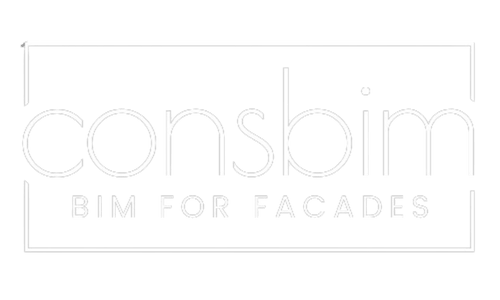The introduction to high Level of Detail (LOD) in facade modeling highlights the importance of understanding the differences between LOD 100, 200, 300, and 400 for project efficiency. High LOD, especially 300 and 400, allow for accurate building models, crucial for complex facades. These models include detailed information on materials, assembly methods, dimensions, and tolerances, directly impacting all aspects of project management.
Chapter 1: High LOD in Practice
LOD 300 vs. LOD 400 in Facade Design
In facade design, LOD 300 allows for detailed modeling of shapes, sizes, and locations of individual elements, such as glass panels, aluminum elements, or stone components. For instance, in a double-skin facade project, LOD 300 enables the precise determination of dimensions for the space between inner and outer glass panels, crucial for optimal air circulation and energy efficiency.
Transitioning to LOD 400, the designer can add detailed structural elements, such as types of fastenings and seals, exact locations of anchoring points, and technical specifications of materials. For a facade with moving elements, like sliding panels or operable windows, LOD 400 allows for accurate modeling of opening mechanisms, slide paths, and required spaces for operations, essential for smooth functionality and safety.
Example of LOD 400 Application
In a complex kinetic facade project, using LOD 400 is essential for accurate modeling and simulation of individual elements’ movement. This precision enables the planning and execution of a control system that synchronizes panel movement, minimizing collision risks and ensuring faultless operation. LOD 400 also allows for detailed planning of electrical and hydraulic installation paths needed for powering and controlling mechanisms, crucial for integrating these systems into the overall building design.
Chapter 2: Planning with High LOD
Detailed Modeling and Energy Efficiency
Using high LOD in facade design directly impacts a building’s energy efficiency. For example, accurate modeling of a double-skin facade in LOD 400 allows for airflow, sunlight, and heat exchange analysis, optimizing these parameters to reduce heating and cooling demands. This approach enables precise adaptation of the facade structure to local climate conditions and building orientation, lowering operational costs.
Impact on Planning of Usable Spaces
Accurate facade element modeling also impacts the planning of internal usable spaces. For instance, detailed modeling of large glazing areas in LOD 400 determines the amount of natural light and its distribution throughout the day, allowing for optimal placement of work or relaxation zones, enhancing user comfort.
Chapter 3: Scheduling with High LOD
Precision in Logistics and Assembly
High LOD significantly facilitates logistics and scheduling of facade assembly. With LOD 400, precise planning of assembly sequences and material deliveries is possible, crucial in projects with limited construction space or high time requirements. An example would be the need to plan deliveries and assembly of large glass panels in a city center, where accurate scheduling is essential to minimize disruptions and delays.
Chapter 4: Cost Management with High LOD
Optimization of Material Costs
Accuracy in LOD 400 modeling allows for precise material needs estimation, optimizing purchases and reducing waste. An example is designing a facade with prefabricated elements, where exact dimensions and specifications enable production to measure, reducing the need for costly adjustments at the construction site.
Chapter 5: Impact on Execution Quality
Minimization of Construction Errors
High LOD provides contractors with precise assembly instructions, significantly reducing the risk of construction errors. In facades with high complexity, such as those integrated with LED lighting systems or photovoltaic panels, detailed models in LOD 400 include information on placement and installation methods for these systems. This ensures not only aesthetic but also functional execution of the facade.
Ensuring Durability and Efficiency of Facades
Precise modeling of structural details and material specifications in LOD 400 allows for designing facades that are not only aesthetically pleasing but also durable and energy-efficient. Detailed data on thermal and mechanical properties of materials enable optimization of the facade construction to ensure long-term performance, minimizing the need for future repairs or modifications.
Challenges and Considerations
Despite numerous benefits, high LOD is also associated with challenges, such as increased costs and time needed for detailed modeling. It is crucial to analyze costs and benefits of using high LOD early in the project, considering the project’s specifics, budgetary constraints, and expectations regarding quality and functionality of the facade.
Conclusion
Applying high LOD in facade design is key to the success of construction projects, offering significant benefits in terms of energy efficiency, execution quality, and optimization of costs and time. Despite the challenges of detailed modeling, these benefits translate into durable and functional facades meeting high aesthetic and technical standards. In the era of increasing complexity of architectural projects, high LOD becomes an essential tool in the modern facade designer’s arsenal.
This detailed discussion underscores the importance of understanding and properly applying high LOD in the context of facade design, enabling optimal outcomes for designers, contractors, and end-users of buildings.

